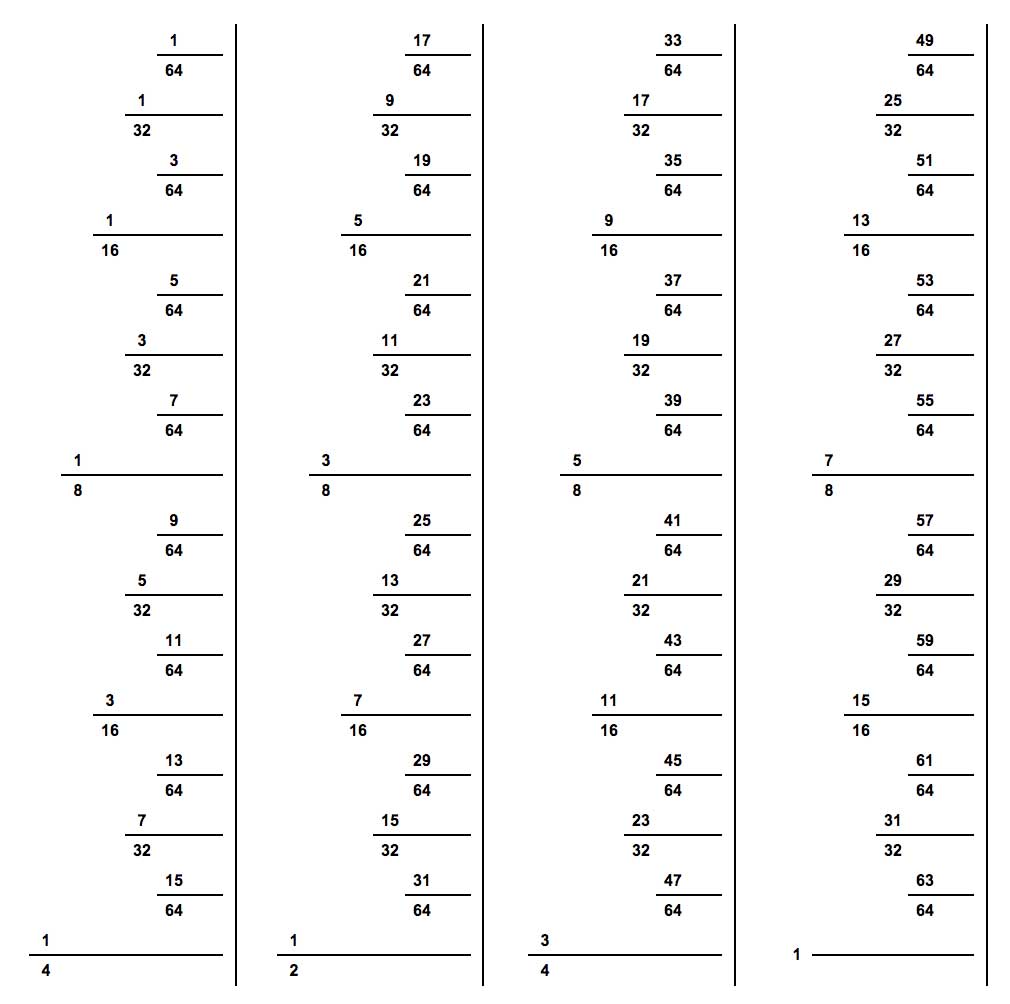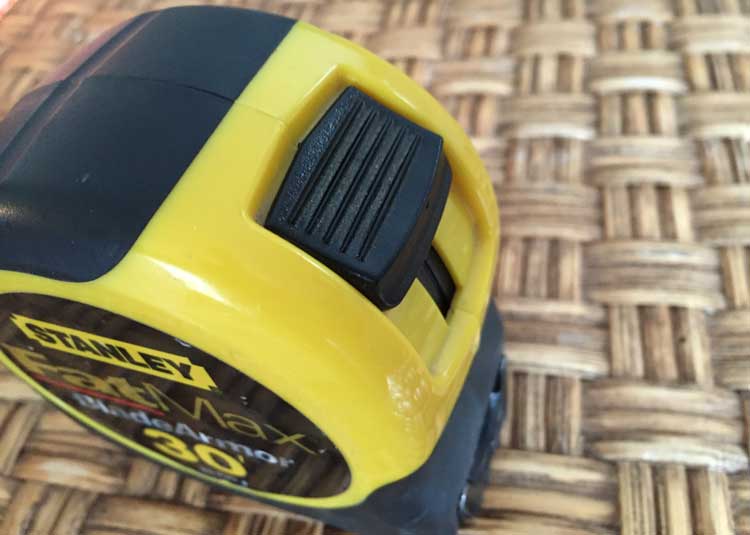How to Read a Tape Measure

A tape measure, also called a measuring tape, is a roll of metal (sometimes cloth) tape with evenly graduated markings used for measuring the length of objects or spaces. The tape is often yellow and rolled in a plastic case.
Tape measures are commonly used in construction, architecture, building, home projects, crafts, and woodworking. They usually come in lengths from 6 feet to 35 feet long.
Tape measures may have measurements in imperial and metric, imperial-only, or metric-only.
How to Read an Imperial Tape Measure
On an imperial tape measure, the markings represent lengths in inches and fractions of an inch.
The largest ticks each represent one inch (1″) increments, and the smaller ticks between them represent the following fractions: 1⁄16“, 1⁄8“, 3⁄16“, 1⁄4“, 5⁄16“, 3⁄8“, 7⁄16“, 1⁄2“, 9⁄16“, 5⁄8“, 11⁄16“, 3⁄4“, 13⁄16“, 7⁄8“, and 15⁄16“. Therefore, the large ticks denote inches, and the smaller ticks denote fractions of an inch.
To read a tape measure, find the number next to the large tick, and then find how many small ticks past it the measurement is. Add the number next to the large tick with the fractional tick to get the measurement. For instance, if the length of an object measures five small ticks past the number 4 tick, then the measurement is 4 5⁄16“.
What Do All the Markings Mean?
To read a measuring tape, you need to understand what all the markings mean. The large ticks are spaced 1″ apart, and the small ticks are all spaced fractions of an inch apart. The numbers next to the large ticks indicate the number of inches from the end of the tape measure.
The second largest ticks halfway between the inch markings are the half-inch markings. There is 1⁄2” between each inch marking and half-inch marking.
The next largest ticks that are halfway between the inch markings and half-inch markings are the quarter-inch markings. There is 1⁄4” between the one-inch marking and the quarter-inch marking, as well as between each quarter-inch marking and the subsequent half-inch marking.
The second smallest ticks are the eighth-inch markings, and there is 1⁄8” between each eighth-inch marking and the adjacent quarter-inch, half-inch, and one-inch markings.
The smallest ticks on a tape measure are the sixteenth-inch markings. There is 1⁄16” between each adjacent marking on the tape measure.
Inch Fractions for Each Mark
See the table below for the decimal equivalents of all the fractions on a tape measure. You might also like our inch fraction calculator for converting between decimal and inch fractions as well as getting decimal equivalents for fractions.

How to Read a Metric Tape Measure
Metric tape measures have similar markings to imperial models, but the markings represent centimeters and millimeters instead of inches and fractions of an inch. The larger markings on a metric tape that are labeled with numbers are the centimeters, and the smaller marks are millimeters.
Because there are 10 millimeters in a centimeter, there are 9 millimeter tick marks between each centimeter on the tape.
How to Use a Tape Measure
Get the most out of your measuring tape with the following tips for using it.
How to Use the Tape Lock
Almost all tape measures have a lock that will hold the tape measure in place and prevent it from recoiling. This is useful if you need to take tension off of the tape measure or if you need to set the tape measure aside while it is extended.

How to Use the Sliding Hook
A signature feature of a tape measure is the hook on the end of the tape. This serves a dual purpose to:
1. prevent the tape from rolling into the case
2. allow the tape to be hooked onto the end of items for convenient measuring
You might notice that the end hook slides or moves just a bit. This is by design to account for the thickness of the hook, so when hooking to an object to be measured, the hook slides outward so that the end of the tape can sit flush with the end of the object.
When butting up against a surface instead, the hook slides slightly inward, so, once again, the end of the tape can sit flush with the surface. Both setups allow for better accuracy when performing various measurements.
How to Use the Framing Stud Hints
Most tape measures have red markings at certain intervals: 16″, 32″, 48″, 64″, and so on. These numbers are significant in that they indicate the placement of studs, which are usually spaced at 16 inches on center intervals, a property useful for framing.
Some tape measures also feature a black diamond symbol at intervals that are 19.2″ apart. These diamonds are also used to indicate joist spacing or framing intervals for a wider stud.